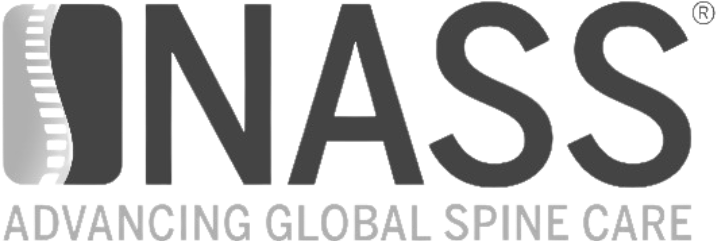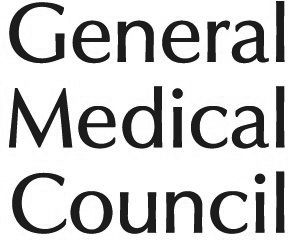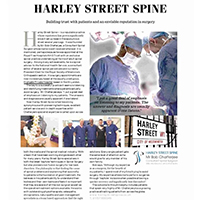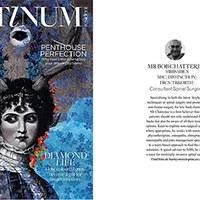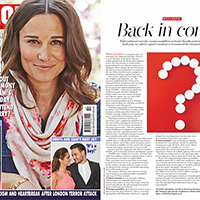Mr Bob Chatterjee, Consultant Orthopaedic and Spinal Surgeon
Mr Bob Chatterjee
Consultant Orthopaedic and Spinal Surgeon
Mr Bob Chatterjee MBBS MRCS MSc(Distinction) FRCS(Tr&Orth)
Consultant Orthopaedic and Spinal Surgeon
Mr Bob Chatterjee
Consultant Orthopaedic and Spinal Surgeon MBBS MRCS MSc(Distinction) FRCS(Tr&Orth)


Areas of expertise
- Spinal surgery
- Cervical (neck) surgery
- Minimal access 'keyhole' spinal surgery
- Thoracic spinal surgery
- Lumbar spinal surgery



Recommendations for Mr Chatterjee
These recommendations are for information purposes only. Doctors providing recommendations do so in good faith and are not responsible for clinical outcomes.












Recommended by:
Make an appointment
Address
-
The London Clinic
5 Devonshire Place, London, W1G 6HL
-
Hospital of St John & St Elizabeth
60 Grove End Road, London, NW8 9NH
-
Telephone or video consultation
Available for patients
About Mr Bob Chatterjee
Mr Bob Chatterjee is a Consultant Spinal Surgeon for Barnet and Chase Farm NHS trust. He has now joined the orthopaedic faculty of the Royal Free London NHS Foundation Trust. He specialises in both the minimally invasive ‘keyhole’ techniques in spinal surgery, and the non-fusion surgery for low back disorders.
Mr Chatterjee graduated from Guy’s & St Thomas’ Hospital, London in 1995, initially training in spinal surgery at Oxford. He was awarded a Culyer Foundation research grant at the Royal National Orthopaedic Hospital, Stanmore where his research into bone regeneration gained a distinction. He undertook specialist Orthopaedic Training on the prestigious Middlesex Rotation and was awarded a Royal College Spinal Fellowship Training programme at Cambridge, and Norfolk & Norwich Hospitals in 2010.
Mr Chatterjee has served as a spinal advisor to the National Health Service. He is a consultant editor of several spinal periodicals and currently serves as the President of the Royal Society of Medicine (orthopaedic section). He is a tutor for minimally invasive spinal surgery and regularly trains junior spinal surgeons. He has both appeared in, and written widely for the media. He has been featured in several national newspaper articles for his expertise in spinal surgery. He also contributes regularly to spinal health and well-being magazines.
Areas of expertise
- Adult deformity surgery
- Anterolateral foraminotomy
- Balloon Kyphoplasty
- Brachalgia (arm pain)
- Cervical (neck) surgery
- Cervical decompression & fusion
- Cervical disc replacement
- Cervical myelopathy (crowding of the spinal cord causing loss of balance and weakness)
- Cervical spinal surgery
- Coccydynia (tailbone pain)
- Complex spinal reconstruction
- Complex spinal surgery
- Disc herniation (slipped disc)
- Discectomy
- Facet joint replacement
- Fractures of the spine
- Keyholespinal surgery
- Low back pain
- Lumbar decompression
- Lumbar discectomy
- Lumbar fusion
- Lumbar laminectomy
- Lumbar microdiscectomy
- Lumbar spinal decompression
- Lumbar spinal surgery
- Minimal access 'keyhole' spinal surgery
- Neck pain
- Neurosurgery
- Non fusion spinal surgery
- Pain management
- Sacroiliac fusion
- Sacroiliac joint dysfunction (low back pain)
- Sciatica (pinched nerve)
- Scoliosis
- Spinal conditions in athletes and sportspersons
- Spinal problems in the elderly
- Spinal stenosis (crowding of the spinal cord causing hunching over and reduction in walking distance)
- Spinal surgery
- Spinal trauma surgery
- Spinal tumours
- Spondylolisthesis (misalignment of the vertebrae)
- Sports spinal injuries
- Thoracic spinal surgery
- Trauma surgery
- Vertebroplasty & kyphoplasty
Frequently asked questions
What are the common symptoms that your patients tend to present with?
• Pain in the back and neck
• Shooting pain in the arms and legs with numbness and tingling
What are the treatments that you're able to offer your patients?
A full state of the art diagnostic service to help patients understand their condition backed up with a 360 multidisciplinary treatment approach involving both non surgical and surgical treatment options.
What are your areas of sub-specialist interest?
• Spinal conditions in the older patient
• Minimal ‘keyhole’ access surgery
• Regenerative biological techniques involving lipogems and plasma cell treatment
Professional memberships



